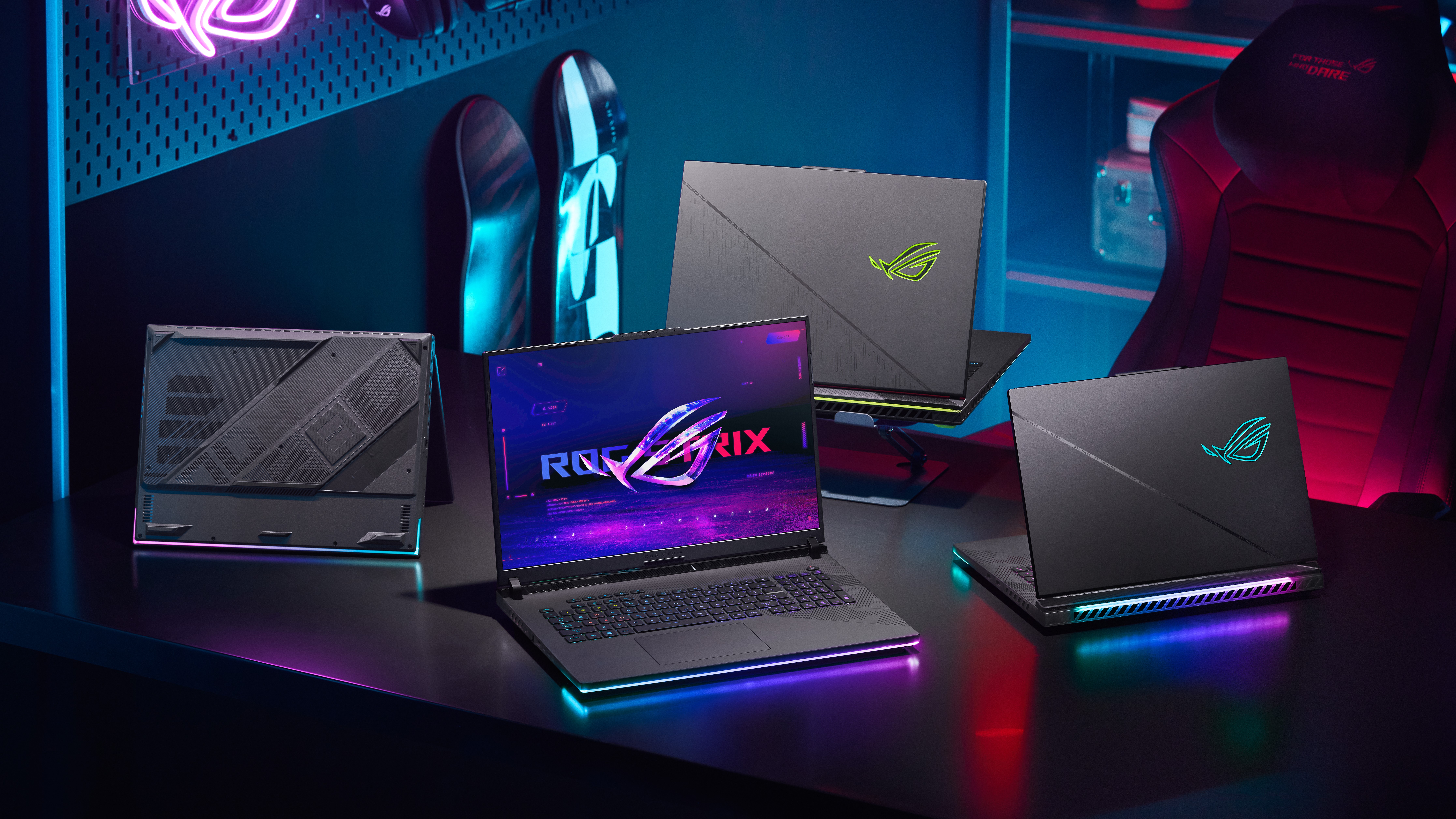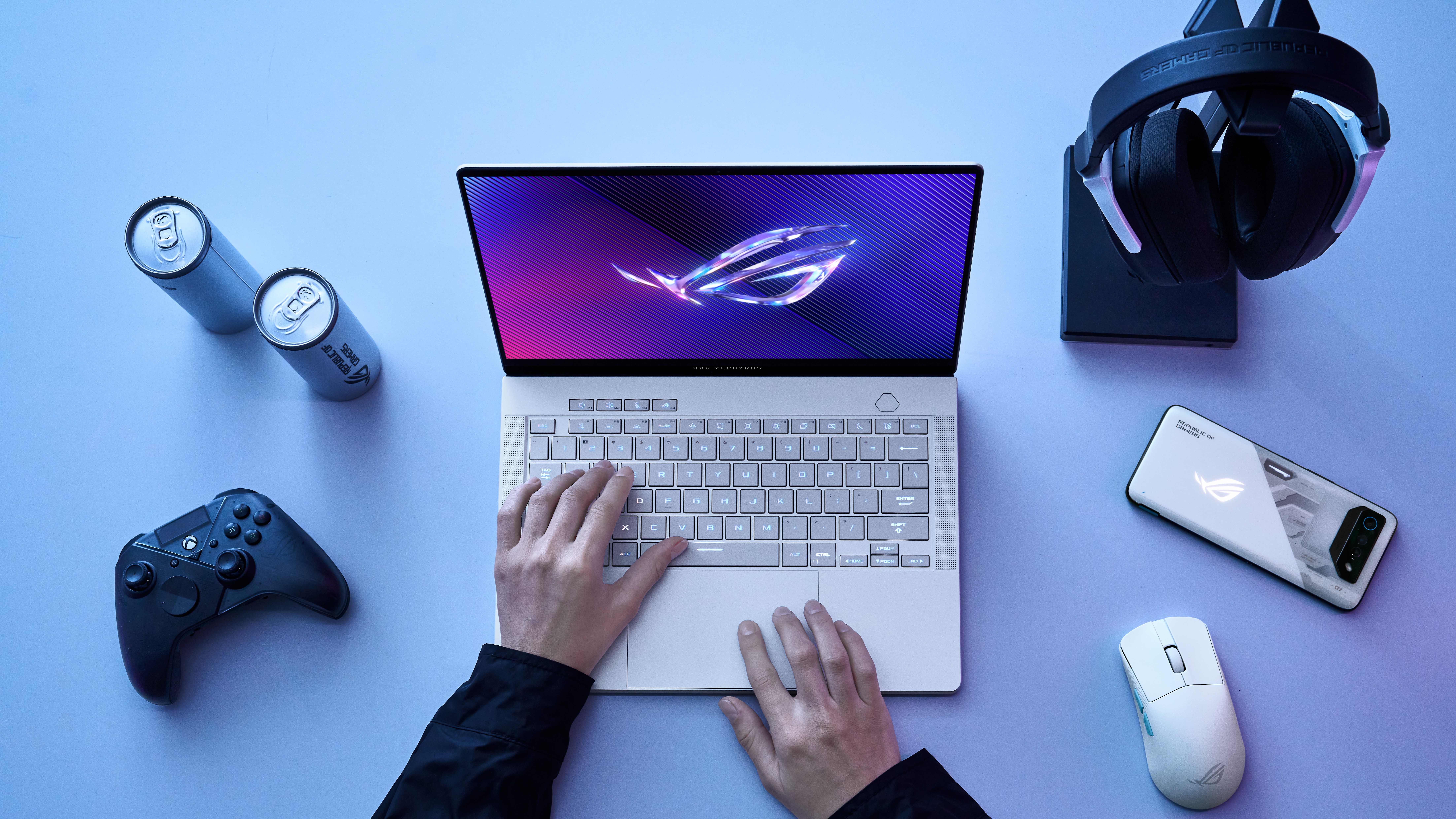Asus reveals six new ROG gaming laptops at CES, led by an 18-inch monster
CES 2024 is currently in full swing in Las Vegas, meaning we’re getting a long-awaited cavalcade of new tech products. If you’re a laptop nerd (like me), you’ve probably been keeping an eye out for new hardware from Asus, and the company has delivered as expected – with a selection of six new gaming laptops under its Republic of Gamers (ROG) brand.
The main event, of course, is the titanic new Asus ROG Strix Scar 18: a monster machine packing a huge 18-inch display and full-scale keyboard. It’s joined by its little brother, the ROG Strix Scar 16, which is still absolutely no slouch despite its smaller screen.
There’s also a pair of more affordable Strix laptops, the ROG Strix G16 and G18, which will no doubt be solid contenders for the best gaming laptop crown – and won’t share the high entry price for the Scar models, which start at a wallet-shattering £3,999.99 in the UK (regional pricing to follow; the Strix G laptops will be launching later in the year).
However, I’m most intrigued by the slick redesign of the ROG Zephyrus G14 and G16 Asus showed off. With a clean outer chassis marked only by a diagonal slash of LED lighting, these two thin-and-light gaming laptops look more like something a professional would use, but without compromising on the power under the hood. That’s the sort of gaming system I wouldn’t be embarrassed to take into the office with me – but more on that later.
ROG Strix Scar 16 and 18: bigger is better
Taking a look at the headline laptops first, both new Strix Scar models will feature up to an Intel Core 14900HX CPU and Nvidia RTX 4090 graphics card, marking them as the absolute top tier of portable (and I use that word somewhat generously, given the size of these laptops) gaming hardware. Up to 64GB of DDR5 RAM and a triple-fan cooling system work to ensure those components will be free of limitations.
The display is of particular note here; an 18- or 16-inch mini-LED panel with a 2.5K resolution and ultra-responsive 240Hz refresh rate, Pantone-validated for superior color accuracy and offering an impressive 1100 nits of peak brightness.
An interesting new feature here is the swappable ‘armor caps’ on the laptop’s back edge, which can be customized to your liking to better showcase the RGB lighting along the rear of the laptop. And mercifully, Asus has joined the crowd in implementing universal USB-C charging. I won’t be waving a sorrowful goodbye to the billion different varieties of proprietary laptop chargers, personally.

The ROG Strix G laptops will be a little less powerful (and a little less pricey), topping out at an RTX 4080 GPU with 32GB of RAM. That’s still a lot of laptop; we don’t yet know what the more budget versions will look like in terms of specs.
The Strix G16 and G18 still feature the same tri-fan cooling system and Thunderbolt 4 support as the more powerful Scar models (though the latter has virtually become a mandatory inclusion on gaming laptops at this point), and while the displays aren’t quite as high-quality in terms of brightness or color accuracy, they still boast the same 2.5K resolution and 240Hz refresh rate, with a snappy response time of 3ms – perfect for esports titles like Valorant.
All four Strix laptops will feature Wi-Fi 6E, Dolby Atmos audio, and 90Whr batteries with fast-charging support, a boon for anyone who likes to game on the go. The G-series systems don’t have the nifty interchangeable armor caps, but they’ve still got customizable RGB lighting at least.
ROG Zephyrus G14 and G16 – power, professionalism
Let me get one thing straight first: I’ve loved the ROG Zephyrus G14 ever since its 2020 debut, so I was obviously going to be excited to see a new model. This sleek redesign is even better than I’d hoped for, though.
At just 1.5kg and 1.59cm thick, the 2024 model of Asus’s premium gaming ultrabook looks fantastic. This aesthetic is as clean as it gets; a pristine aluminum outer shell in white or grey, with a stainless steel slash across the lid that glows softly with customizable LED lighting. Visually, at least, this is what compact gaming laptops should aspire to be.
The display doesn’t disappoint either: a gorgeous 3K OLED panel with both Pantone and VESA DisplayHDR certifications that make it a viable option for professional work like video editing or digital art as well as gaming. The Zephyrus G14 also gets a six-speaker upgrade, which Asus claims makes it a whopping 252% louder than the previous model at max volume.

Asus has stuck to its previous rule of using AMD processors for the Zephyrus G14, with the new model packing the latest Ryzen 8000 processors – which feature Ryzen AI. Similarly, the G16 model will use Intel’s new Core Ultra CPUs, which make use of Intel’s dedicated on-chip neural processing unit (NPU) to accelerate AI workloads.
Both the 14- and 16-inch Zephyrus models will use Nvidia GPUs, however, with the G14 topping out at the RTX 4070 while the G16 can be configured up to a beefy RTX 4090. Both come with 32GB of DDR5 and, much like the new Strix laptops, feature enhanced batteries with fast charging.
Oddly, the Zephyrus G16 has a slightly lower display resolution than its smaller sibling – 2.5K as opposed to 3K – but it comes with double the refresh rate to balance things out. Lastly, both laptops have ‘stealth hinge technology’, which… okay, I’m not entirely sure what that is. Asus wasn’t forthcoming about it in the press release, but I’m assuming it’s a new hinge design that allows the laptop to be constructed to be even thinner than before. Care to enlighten us, Asus?
Check out our CES 2024 hub for all the latest news from the show as it happens. We’ll be covering everything from 8K TVs and foldable displays to new phones, laptops, smart home gadgets, and the latest in AI, so stick with us for the big stories. And don’t forget to follow us on TikTok for the latest from the CES show floor!
stereoguide-referencehometheater-techradar